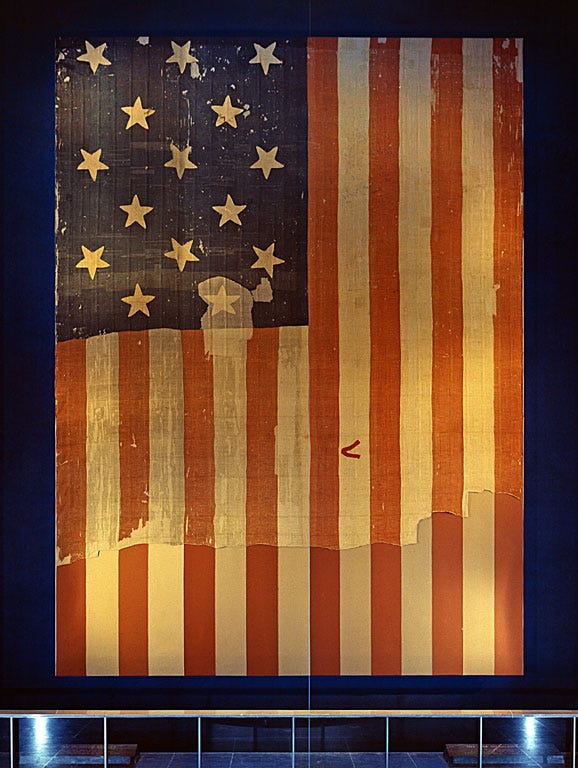The 15-Stripe American Flag
A brief story about a brief moment in our flag's history for the Fourth of July
For most of our nation’s history, our flag had 13 stripes. But for about two decades –– from 1795 to 1818 –– the American flag had 15 stripes.
Prior to 1795, the flag had 13 stars and 13 stripes, with both sets of symbols representing America’s 13 states. But, in 1791, Vermont joined the Union, followed by Kentucky in 1792. Thus, in 1795, the flag was updated to 15 stars and 15 stripes, representing the 15 states in the United States.
However, sailors on merchant ships (the biggest users of flags) were unhappy with this update. For them, flags helped sailors identify passing ships, and they felt the flag’s usefulness for identification would be diminished as more and more states joined the Union and, in turn, more and more stars and stripes were added to the flag. The flag’s design would continually change.
Realizing that the flag would become unwieldy with a new stripe for each new state, US Navy Captain Samuel Reid suggested to Congress that the stripes remain at 13 to represent the original colonies and a new star be added for each new state. Congress agreed, and in 1818, President Monroe signed a bill standardized the flag’s stripes at 13 and formalizing the addition of a new star to the flag for each new state, to be added on the Fourth of July following the state’s date of admission. Our modern flag design was born.
In 1814, four years before we returned to a 13-stripe flag, a major bombardment in the War of 1812 raged on at Baltimore’s Fort McHenry. During the battle, 35-year-old lawyer Francis Scott Key was detained on a British ship. From the ship, he watched the siege of the fort and marveled at how the American flag –– the 15-stripe flag –– flew valiantly over Fort McHenry the next morning. Inspired by the thought that the flag withstood battle (even though, in reality, it was taken down overnight due to heavy rains and then lifted again before sunrise), Francis wrote a poem that his brother-in-law set to music. The poem was called “The Star-Spangled Banner.”
O say, does that star-spangled banner yet wave
O'er the land of the free
And the home of the brave
Notes.
This information is pulled largely from this series of articles.




